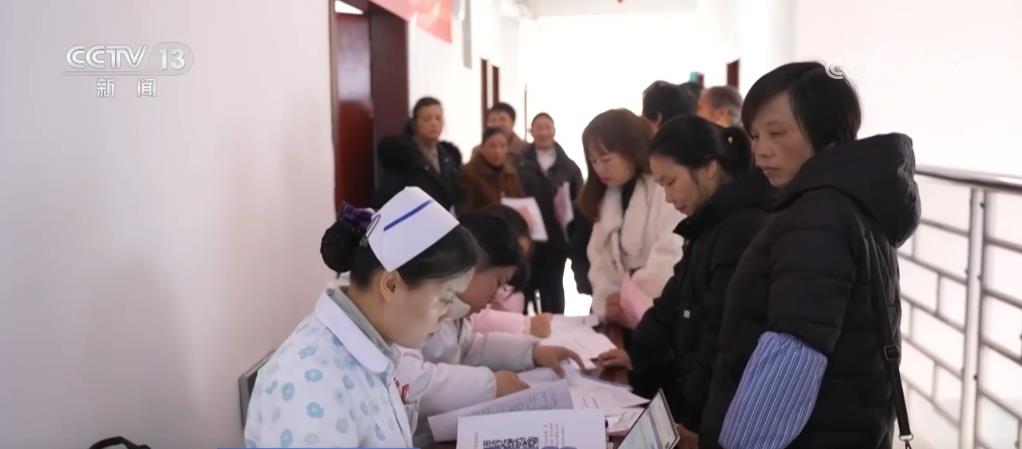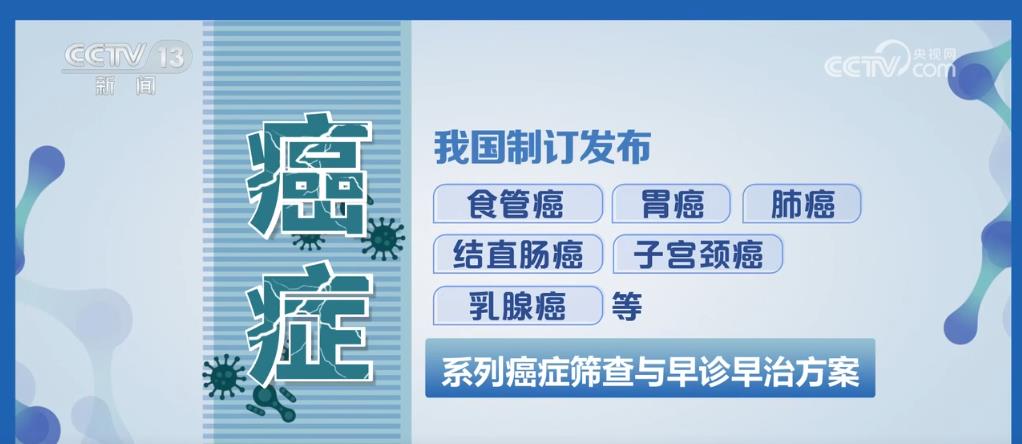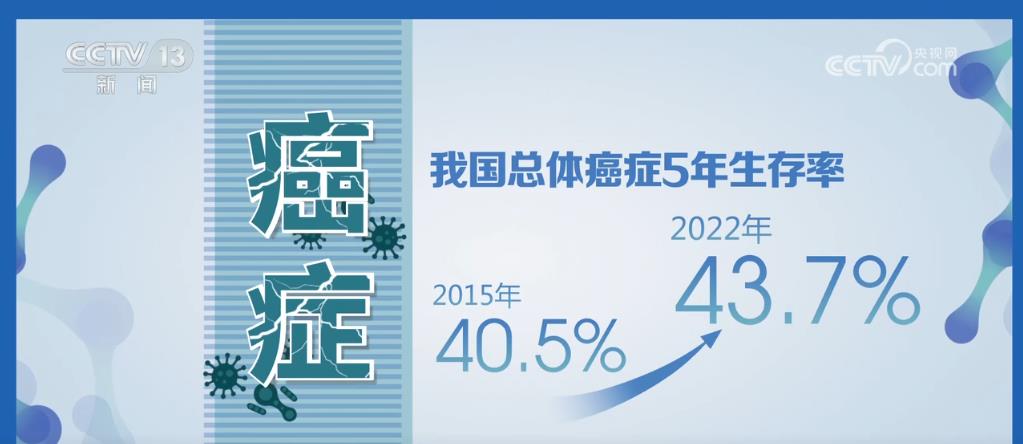Data witness the continuous improvement of cancer screening and diagnosis level in China, and weave a "protective net" for people’s health.
CCTV News:The reporter learned from the National Health and Wellness Commission that in recent years, the level of cancer screening and diagnosis in China has been continuously improved, and the rising trend of cancer incidence and mortality has been initially curbed, especially the incidence and mortality of traditional high-incidence upper digestive tract tumors in China have dropped significantly.

According to the relevant person in charge of the National Health and Wellness Commission, at present, China has initially established a four-level cancer prevention and control network at the national, provincial, municipal and county levels, and has established a nationwide cancer registration system for the population. The cancer registration points cover 98.6% of the districts and counties in the country, providing a scientific basis for cancer prevention and control.

Improving the quality and expanding the scope of early diagnosis and treatment of cancer. China has formulated and issued a series of cancer screening, early diagnosis and early treatment programs for esophageal cancer, gastric cancer, lung cancer and colorectal cancer, cervical cancer and breast cancer. The average annual coverage of cancer screening and early diagnosis and treatment exceeds 80 million person-times, the coverage rate of women’s "two cancers" screening districts and counties reaches 98%, and the early diagnosis rate of key cancer species in key areas exceeds the expected target of 55%.
The overall 5-year survival rate of cancer in China has increased from 40.5% in 2015 to 43.7% in 2022. According to the special action requirements of cancer prevention and treatment in Healthy China, by 2030, the overall five-year survival rate of cancer in China will reach the main goal of 46.6%, and the disease burden of patients will be effectively controlled.

Cancer has genetic science to treat tumor markers.
According to the World Health Organization, one third of cancers can be prevented and one third can be cured through early detection and treatment. The public also has many doubts about the diagnosis and treatment of cancer. For example, can cancer be inherited? Can bacterial and viral infections cause cancer? Does the increase of tumor markers mean cancer? Let’s listen to the expert’s interpretation.
Fan Daiming, an academician of China Academy of Engineering, said that in terms of people’s physique, tumors are inherited, roughly 15%— 30% of tumors are caused by genome changes, which are genes brought in the fetus. From the external factors that cause tumors, it is contagious, such as liver cancer caused by hepatitis B virus and cervical cancer caused by HPV. HPV is contagious.
In addition to some known viral infections such as hepatitis B virus and human papillomavirus, some bacterial infections are actually directly related to cancer.
Cheng Xiangdong, vice chairman of China Anti-Cancer Association, said that there are two kinds of liver cancer, one is hepatocellular carcinoma and the other is cholangiocarcinoma. The occurrence and development of cholangiocarcinoma is related to inflammation, for example, gallstones. If the stones cannot be removed by conservative treatment, it is recommended to remove the gallbladder.
Nowadays, the public pays more and more attention to physical examination, and some people will do physical examination specifically for cancer. The most widely known among these examinations is tumor marker examination. According to experts, protein, enzymes, hormones and genetic markers are among the tumor markers in China. If these markers are elevated, especially when they are significantly elevated, they may be closely related to cancer, but they cannot be equated with cancer.
Common tumor markers in physical examination include carcinoembryonic antigen, alpha-fetoprotein, cancer antigen 125, prostate specific antigen, squamous cell carcinoma antigen, etc. Among them, some markers with very high specificity and sensitivity, such as alpha-fetoprotein reflecting liver cancer and prostate specific antigen reflecting prostate cancer, should be taken seriously. Other common tumor markers with low sensitivity may also be benign problems, such as infection, inflammation, alcoholism, smoking and so on. Single tumor marker monitoring often has certain limitations, so doctors often use multiple indicators to jointly detect, thus improving the detection rate of tumors and helping to judge the nature of tumors in the body.
More than 95% of the first discovered pulmonary nodules are benign.
Lung cancer is the number one cancer-related death in the world. In China, both the new cases and deaths of lung cancer rank first in malignant tumors. With the popularization of chest CT, the terms pulmonary nodule and ground glass are becoming more and more familiar. Then, does the physical examination find that lung nodules must be lung cancer? Should lung nodule be operated immediately?
According to experts, nodules larger than 2 mm can be found on CT, and nodules smaller than 6 mm can be basically ignored. Pulmonary nodules are not equal to lung cancer, and most of them are benign. Don’t panic when lung nodules are found for the first time by chest CT, and check them regularly according to the doctor’s advice to observe the changes of pulmonary nodules.
Although most pulmonary nodules are benign and do not need clinical treatment, in recent years, the number of lung cancer patients aged 40 to 50 has increased significantly. According to experts, because the early symptoms of lung cancer are not obvious, 70%— 80% of the patients were diagnosed in the middle and late stage, thus missing the best treatment opportunity. The survival rate of lung cancer patients is closely related to the cancer stage, and the earlier it is found, the higher the long-term survival rate will be.